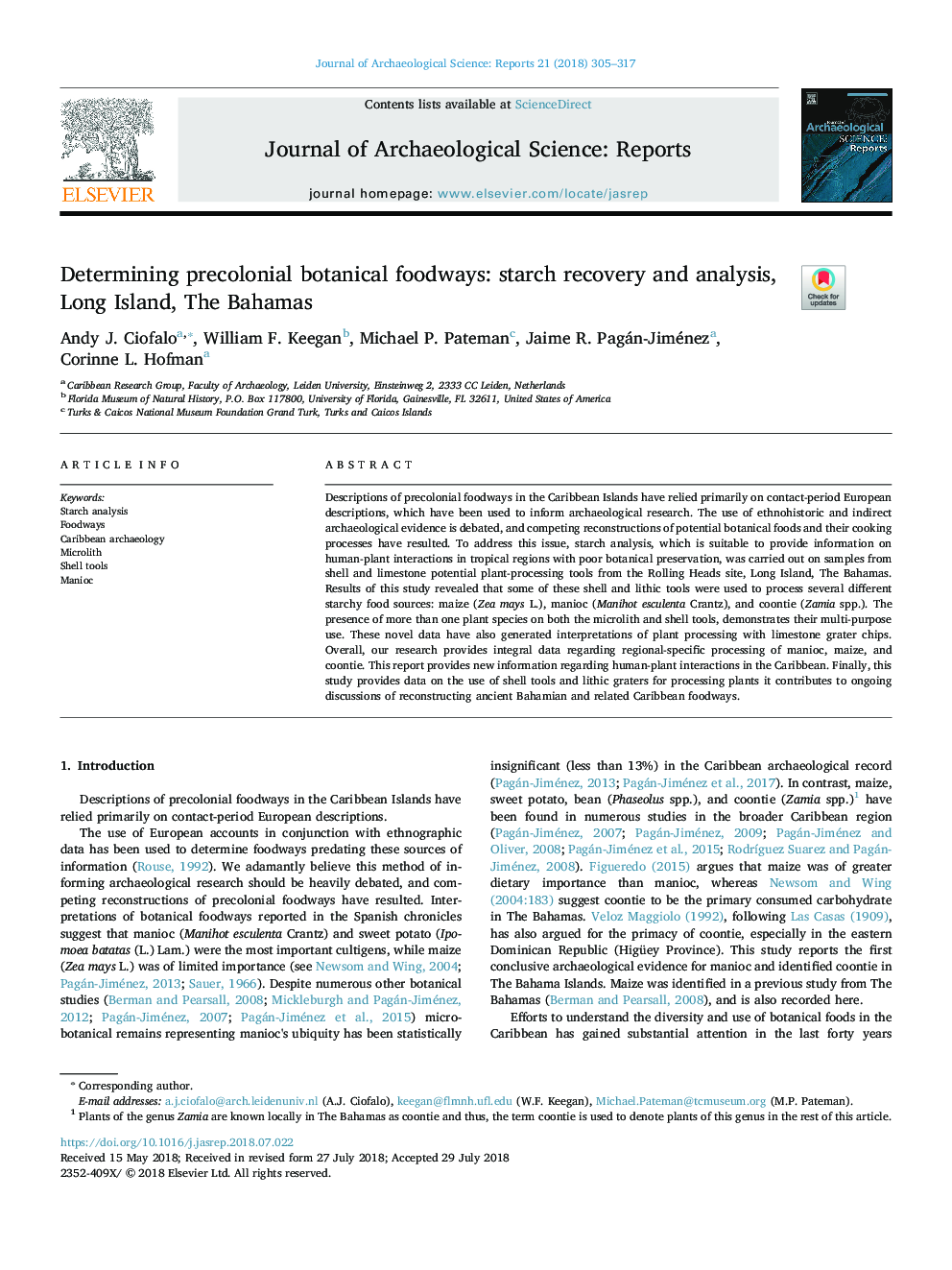| Article ID | Journal | Published Year | Pages | File Type |
|---|---|---|---|---|
| 7444076 | Journal of Archaeological Science: Reports | 2018 | 13 Pages |
Abstract
Descriptions of precolonial foodways in the Caribbean Islands have relied primarily on contact-period European descriptions, which have been used to inform archaeological research. The use of ethnohistoric and indirect archaeological evidence is debated, and competing reconstructions of potential botanical foods and their cooking processes have resulted. To address this issue, starch analysis, which is suitable to provide information on human-plant interactions in tropical regions with poor botanical preservation, was carried out on samples from shell and limestone potential plant-processing tools from the Rolling Heads site, Long Island, The Bahamas. Results of this study revealed that some of these shell and lithic tools were used to process several different starchy food sources: maize (Zea mays L.), manioc (Manihot esculenta Crantz), and coontie (Zamia spp.). The presence of more than one plant species on both the microlith and shell tools, demonstrates their multi-purpose use. These novel data have also generated interpretations of plant processing with limestone grater chips. Overall, our research provides integral data regarding regional-specific processing of manioc, maize, and coontie. This report provides new information regarding human-plant interactions in the Caribbean. Finally, this study provides data on the use of shell tools and lithic graters for processing plants it contributes to ongoing discussions of reconstructing ancient Bahamian and related Caribbean foodways.
Related Topics
Social Sciences and Humanities
Arts and Humanities
History
Authors
Andy J. Ciofalo, William F. Keegan, Michael P. Pateman, Jaime R. Pagán-Jiménez, Corinne L. Hofman,
